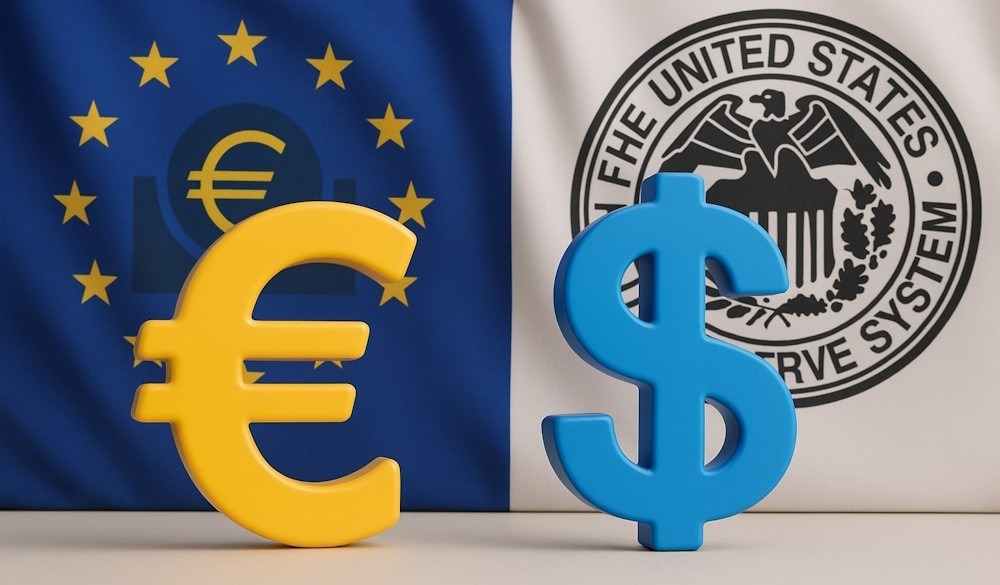The EUR/USD pair has experienced a pullback after hitting a yearly peak above 1.1900, declining by 0.22% on Thursday. This movement follows positive economic indicators from the United States and a hawkish stance from Federal Reserve Chair Jerome Powell, which have strengthened the US Dollar. The currency pair is currently trading at approximately 1.1780, following a daily peak of 1.1848.
The Euro declines as Powell indicates a careful approach following the 25 basis point reduction by the Fed. US Jobless Claims have decreased, and the Philly Fed survey has surpassed expectations, bolstering the strength of the Dollar in post-FOMC trading. ECB officials maintain a neutral stance, indicating that current rates are suitable, with inflation risks appearing balanced alongside a less optimistic growth outlook.
> The EUR/USD pair has decreased by 0.22% following positive US economic data and comments from the Fed chair that have moderated expectations for rate cuts: Jobs data indicated a decline in the number of Americans filing for unemployment benefits, contrasting with estimates and an upwardly revised figure from the previous week. The Philadelphia Fed Manufacturing Index reported impressive numbers in September, indicating a positive shift for the region’s economy. The US data showed positive results; however, the EUR/USD experienced a downtrend following the Fed’s decision on Wednesday. The US central bank reduced rates by 25 basis points, resulting in the pair reaching its annual peak of 1.1918. Nevertheless, during Fed Chair Powell’s press conference, it appears that sellers dominated the market, or buyers opted to realize their profits. Powell recognized that labor demand has weakened and, although inflation is still “somewhat elevated,” he pointed out that the balance of risks has changed. He indicated that there was “no widespread support for a 50-basis-point cut today,” and emphasized that the Fed is not in a hurry to relax policy. European Central Bank policymakers, including De Guindos, Stournaras, and Escriva, emphasized the importance of maintaining policy flexibility and adopting a neutral stance. The current rates are viewed as suitable, with inflation risks appearing balanced; however, growth risks are tilted towards the downside.
Latest FX Rate Trends : EUR/USD declines as the Dollar strengthens despite the Fed’s rate cut
- US Initial Jobless Claims decreased to 231K for the week ending September 13, falling short of the anticipated 240K and significantly down from the previous week’s upwardly revised figure of 264K. Continuing Claims decreased to 1.920 million from 1.939 million.
- In September, the Philadelphia Fed Manufacturing Index experienced a significant rebound, rising to 23.2 from August’s -0.3. This figure greatly exceeded the anticipated 2.3, indicating strong activity within the sector.
- The Federal Reserve recognized increasing downside risks to the labor market, indicating that although unemployment stays low, it has slightly risen. The policy decision reflected a lack of consensus, as Governor Stephen Miran chose to implement a more substantial 50-basis-point cut, aligning with certain analysts’ forecasts.
- The Summary of Economic Projections indicated an expected further 50 basis points of rate cuts by the end of the year, concluding at 3.6%. Officials have updated their growth projections, with GDP now anticipated to be 1.6%, an increase from the previous estimate of 1.4%. Meanwhile, the Unemployment Rate remains steady at 4.5%.
- Policymakers anticipate PCE inflation to reach 3% by 2025, while core figures are expected to conclude at 3.1%, remaining consistent with earlier forecasts.
- The US Dollar Index, which measures the dollar’s performance against a basket of six currencies, has increased by 0.39%, reaching 97.39.

